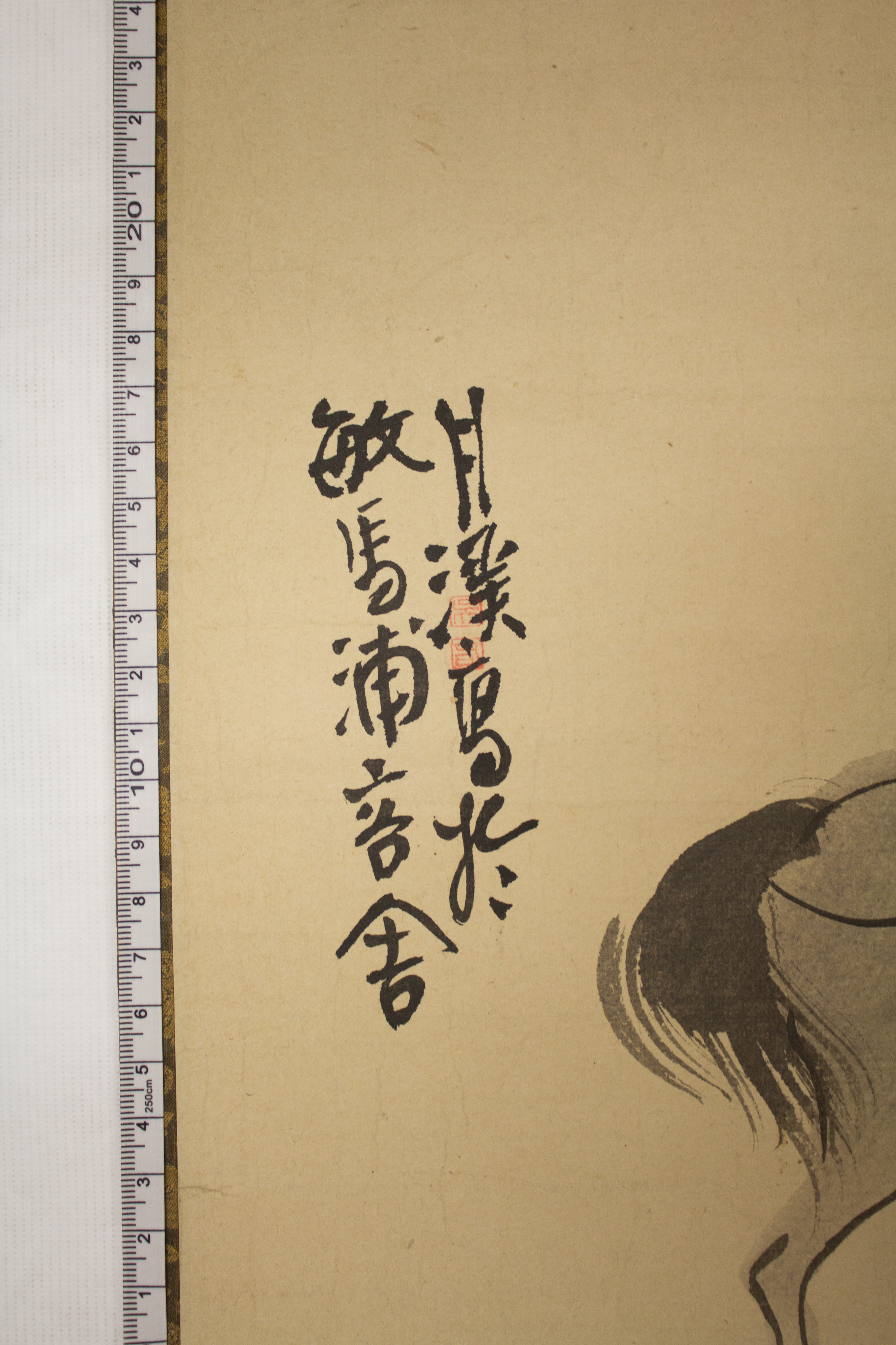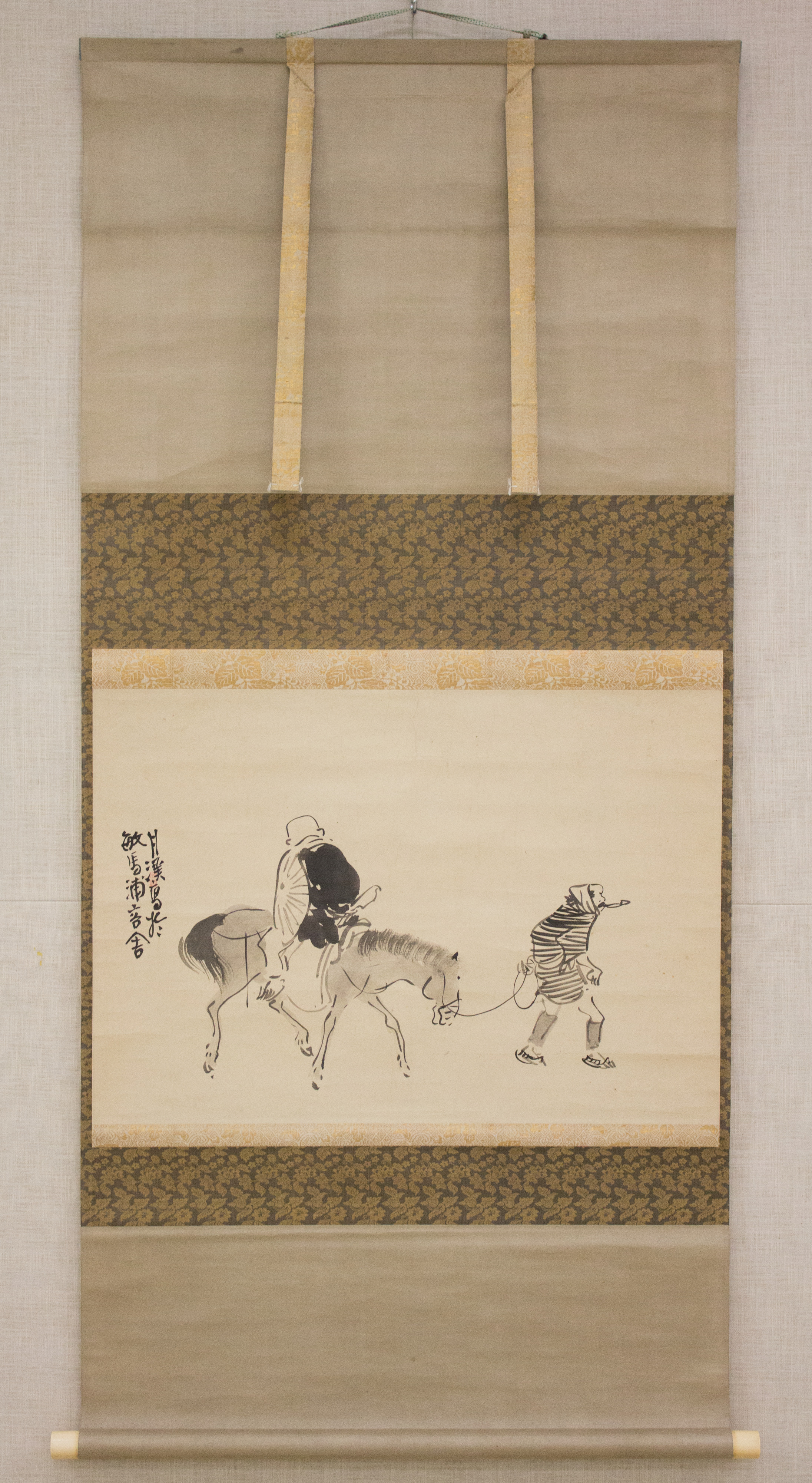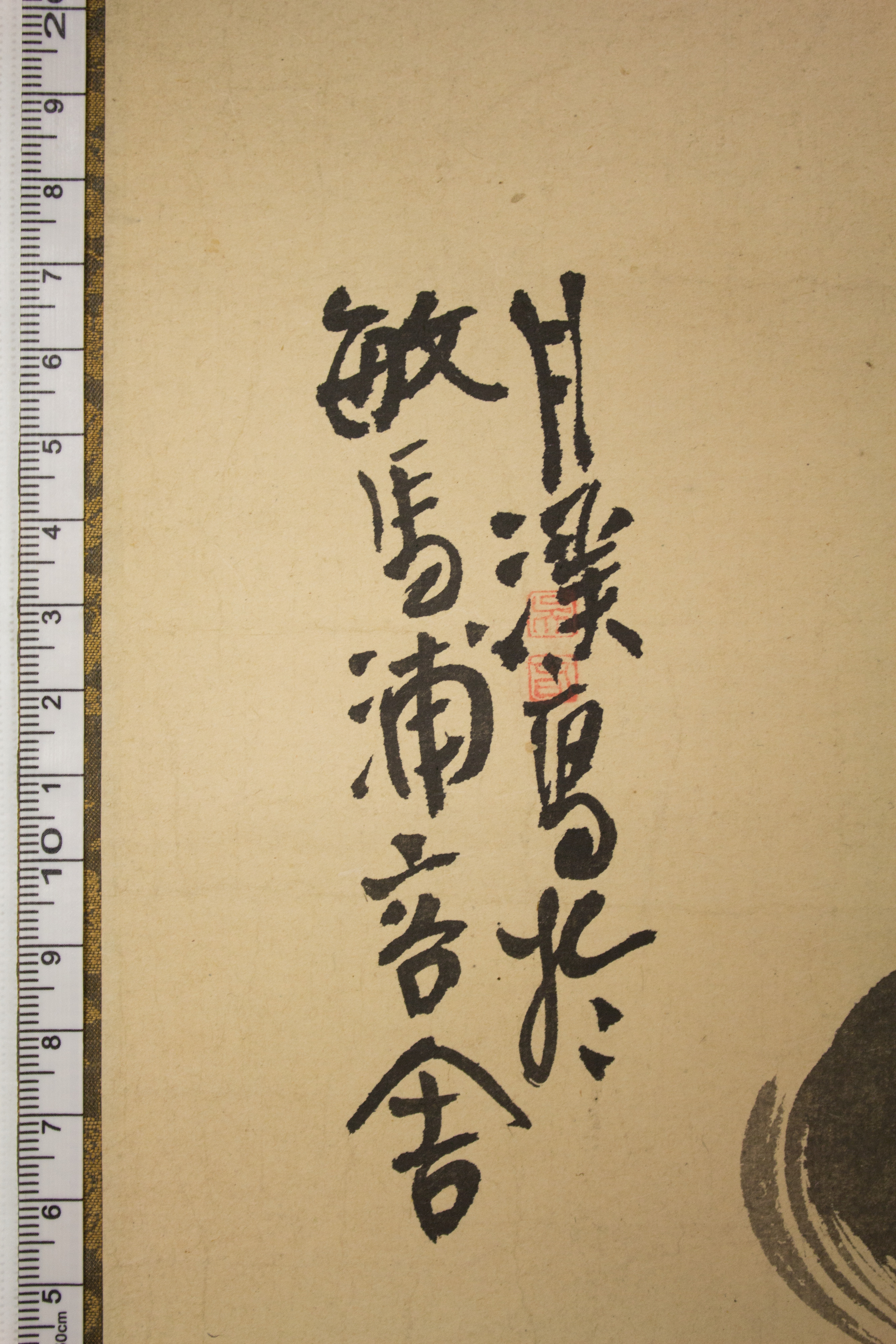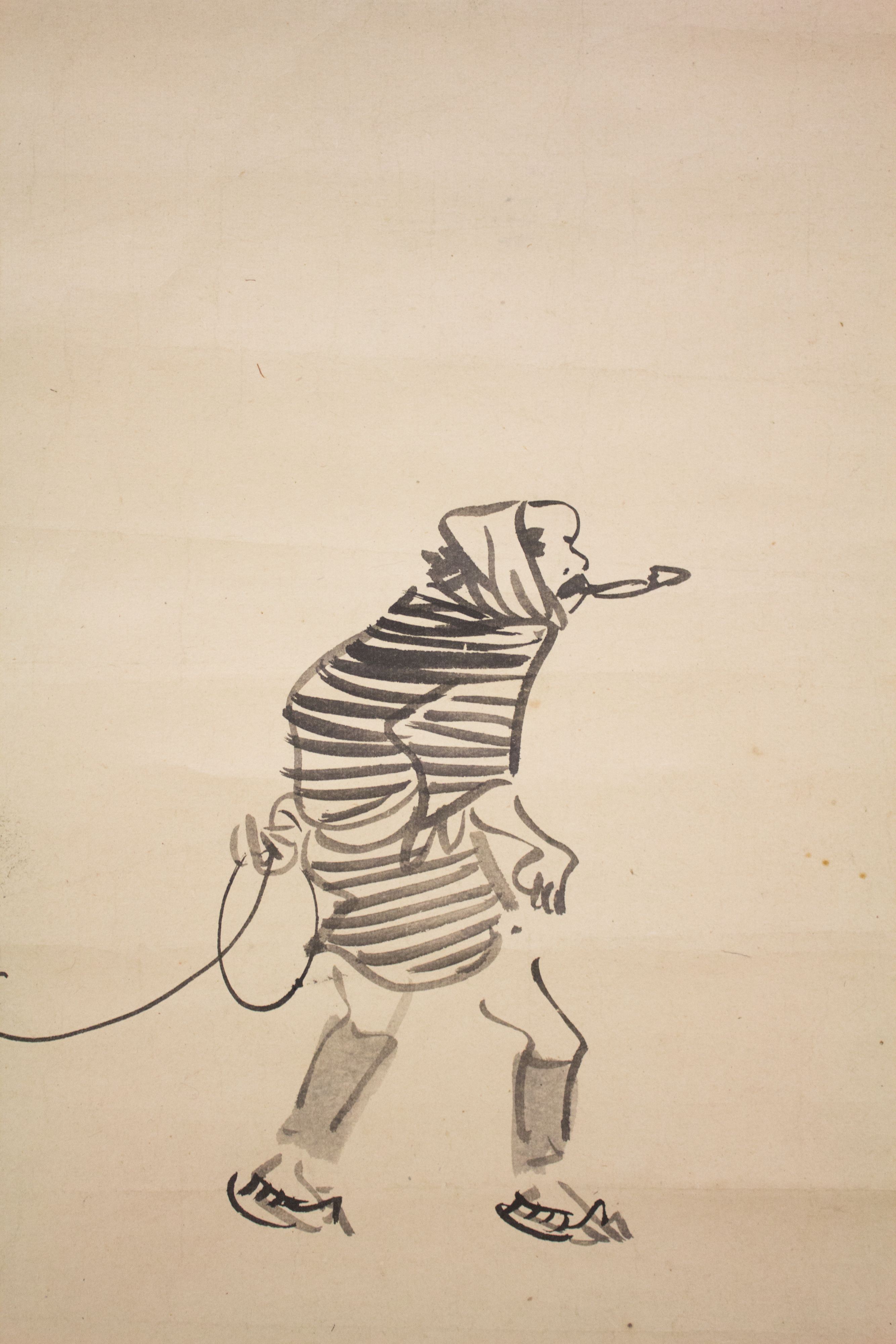Monk Renshō Riding His Horse Backwards
Matsumura Goshun Japanese
Not on view
A famed military hero of the Genpei War (1180–1185), Kumagai Naozane, haunted by regrets for the lives he took on the battlefield, renounced his worldly ways to become a follower of the Pure Land School of Buddhism. Changing his name to Renshō, he vowed to never again turn his back on Amida, the Buddha of the western paradise.
Artistic renditions often draw on the resulting anecdote that Renshō, when traveling from Kyoto to the Kantō region of Japan (in the east), quite literally had to sit on his horse backwards in order to not break his promise. Goshun paints the theme in the typical casual manner of haiga (painting in the spirit of haiku). According to the signature, it was executed in a guest house in Minume, a place of ancient poetic associations, now part of the city of Kobe.
This image cannot be enlarged, viewed at full screen, or downloaded.
This artwork is meant to be viewed from right to left. Scroll left to view more.







